Discover This FREE Resource for Breaking the Cycle of Trauma
Sounds True Presents: The Myth of Self-Regulation
How Our Inner Community Supports Us Every Day – A FREE Video Learning Session with Bonnie Badenoch, PhD, LMFT
In this video program, we’ll be exploring:
- What every therapist (and human) needs to know about themselves
- Why our well-intended tools and plans can often fail to help clients
- How to encourage a safe and nurturing “inner community” in others
Bonnie Badenoch is a therapist, author, consultant, and trainer. She is a student of interpersonal neurobiology and the author of The Heart of Trauma and Being a Brain-Wise Therapist. Her work is informed by nearly three decades of work helping those with trauma and attachment wounds.
This site contains affiliate links to products, online events, and tools for personal transformation. We may receive a commission for purchases made through these links
Introduction Breaking the Cycle of Trauma
Trauma is like a shadow that follows us through generations, silently shaping lives without conscious awareness. The “cycle of trauma” refers to patterns of behavior and emotional responses that are passed down from parents to children, often stemming from unresolved issues and hardships experienced in the family lineage.
Trauma can manifest in various forms, from physical and emotional abuse to neglect or witnessing violence. These experiences can leave deep psychological scars that affect an individual’s ability to form healthy relationships, cope with stress, and manage emotions. The cycle of trauma perpetuates itself when these unhealed wounds influence parenting styles and the home environment. Children raised in such conditions may internalize dysfunctional coping mechanisms and belief systems, which they, in turn, may unknowingly pass on to their offspring.
Understanding the origins of this cycle is crucial for breaking it. Often, trauma has roots in historical and systemic issues such as poverty, discrimination, or war. These larger forces can exert a powerful influence on family dynamics, creating stressors that contribute to the transmission of trauma. Within families, the silence around past abuses or hardships can also play a role, as it prevents the processing and resolution of pain, allowing the cycle to continue unchallenged.
Breaking the cycle requires intentional action. It involves recognizing the patterns of trauma, seeking professional help such as therapy and Emotion Code therapies, and developing new, healthier ways of relating to oneself and others. Education about trauma and its effects can empower individuals to make conscious changes in their behavior and interactions. By addressing the underlying issues and learning new strategies for emotional regulation and communication, individuals can lay the groundwork for healing themselves and future generations.
Examples of Trauma
To identify a cycle of trauma, we must look for repeating patterns of behavior, emotional distress, or adverse experiences that seem to persist across generations and individual lives.
These can range from substance abuse, violence, and neglect to systemic issues like poverty and discrimination.
Here are some common examples of root causes of traumas:
-
Physical Abuse: This includes any form of violence or physical harm inflicted upon a person, often resulting in injuries. It can range from hitting or beating to more severe forms like torture or maiming.
- Emotional Abuse: Emotional or psychological abuse involves behaviors that harm an individual’s self-worth or emotional well-being. Examples include insults, threats, intimidation, constant criticism, and gaslighting.
- Sexual Abuse: Sexual trauma encompasses any unwanted sexual activity, including rape, molestation, and sexual exploitation. This also covers situations where consent cannot be given, such as with children or individuals who are incapacitated.
- Neglect: Neglect is the failure to provide for a child’s basic needs, which can be physical (like food, shelter, healthcare) or emotional (such as affection, attention, emotional support).
- Witnessing Violence: Being a witness to violence, such as
domestic abuse or community violence, can be traumatic, especially for children who may feel powerless or fear that they will be next.
- Substance Abuse: Substance abuse within a family can lead to a chaotic and unstable environment, contributing to emotional distress and neglect of children.
- Mental Illness: Untreated mental illness in a parent or family member can create a traumatic environment due to unpredictability, potential for harm, or emotional unavailability.
- Systemic Discrimination: Experiencing discrimination or living under systemic oppression due to race, ethnicity, gender, sexuality, or socioeconomic status can cause chronic stress and trauma.
-
Poverty: Growing up in poverty can expose individuals to numerous stressors, including food insecurity, inadequate housing, lack of access to healthcare, and educational disparities.
- War and Conflict: Families affected by war or conflict may deal with loss, displacement, injury, and the psychological effects of living in a dangerous environment.
- Natural Disasters: Trauma can result from natural disasters that disrupt lives, causing loss of home, loved ones, and a sense of security.
- Accidents, Serious Illness, or Death of a Loved One: Traumatic events can also include life-threatening accidents or illnesses, either experienced personally or by a close family member, leading to lasting psychological impact.
Understanding the prevalence of trauma is crucial, as it doesn’t discriminate and can affect anyone. It’s imperative to recognize its vast impact and the importance of breaking free from its grip for the health and well-being of individuals and society.
Dr. Peter Levine on the Somatic Experiencing Approach on Healing Trauma
Based on ConsciousnessCalibrations.com this video calibrates as true at the consciousness level of 390 on the Map of Consciousness®, which is significant for healing.
Based on ConsciousnessCalibrations.com, the book by Dr. Peter Levine, In an Unspoken Voice: How the Body Releases Trauma and Restores Goodness, calibrates at a high level of consciousness of 405, which is the level of reason and the mind. This book as over 1500 4.7 STAR reviews on Amazon.
Discover The Healing Trauma Online Course
A Step-by-Step Program for Restoring the Wisdom of the Body Presented by Sounds True
Evolution has provided us with a way to deal with trauma the moment it happens—yet our cultural training overrides our body’s natural instinct about what to do. The result is that we often store the energy of trauma in the body leading to unexplained physical problems, emotional issues, and psychological blockages.
Course objectives:
 Assess when trauma may be the cause of anxiety, insomnia, depression, and unexplained pain.
Assess when trauma may be the cause of anxiety, insomnia, depression, and unexplained pain.- Apply nature’s lessons on returning to equilibrium and balance.
- Describe the concepts of Somatic Experiencing.
- Demonstrate techniques for preventing trauma.
- Utilize exercises to release past trauma from the body.
- Discuss exercises that build resilience for future challenges.
 Dr. Peter A. Levine’s breakthrough techniques have helped thousands of trauma survivors tap into their innate ability to heal—from combat veterans and auto accident victims, to people suffering from chronic pain, and even infants after a traumatic birth.
Dr. Peter A. Levine’s breakthrough techniques have helped thousands of trauma survivors tap into their innate ability to heal—from combat veterans and auto accident victims, to people suffering from chronic pain, and even infants after a traumatic birth.
Defining Childhood Trauma
Photo by Mikhail Nilov
Childhood trauma encompasses a range of experiences that a child perceives as profoundly distressing or disturbing. These can be acute events or ongoing stressors that fundamentally disrupt a child’s sense of safety and well-being.
Childhood trauma refers to the exposure of a child to events or circumstances that are emotionally painful and distressing, which can result in lasting mental and emotional effects. This ty of trauma can occur as a single event or can be a series of events or ongoing situations that overwhelm the child’s ability to cope and integrate their emotions and experiences. The impact of childhood trauma is profound because it occurs during critical periods of development when the brain and self-concept are still forming.
Traumatic events in childhood can include direct experiences such as physical, sexual, or emotional abuse, as well as indirect experiences like witnessing violence or living through a natural disaster. Additionally, chronic stressors such as living in poverty, experiencing discrimination, or having a caregiver with untreated mental illness can also be traumatic. These experiences can disrupt the child’s sense of security and stability, leading to a range of negative outcomes.
The effects of childhood trauma may not always be immediately apparent. Sometimes, the symptoms or consequences only become evident as the child ages and may manifest as learning, behavior, and relationship difficulties. Trauma can affect a child’s developing brain, leading to changes in the structure and function of areas involved in emotion regulation, memory, and cognition. This can increase the risk for a variety of mental health issues, including anxiety, depression, substance abuse, and post-traumatic stress disorder (PTSD).
Recognizing childhood trauma involves paying attention to various signs and symptoms that a child may exhibit. These can include regressive behaviors, such as bedwetting or thumb-sucking, disruptive or aggressive behaviors, withdrawal or isolation, difficulty with attention and concentration, and unexplained fears or anxieties. Children might also show changes in eating or sleeping patterns and have somatic complaints like headaches or stomachaches without a clear medical cause.
Addressing childhood trauma requires a multifaceted approach that includes ensuring the child’s safety, providing psychological support, and possibly involving interventions such as therapy. Therapeutic approaches like trauma-focused cognitive-behavioral therapy (TF-CBT) are designed to help children process their experiences and develop coping strategies. Supportive adults, safe environments, and consistent routines can also play a crucial role in helping a child heal from trauma.
In summary, childhood trauma encompasses a wide range of distressing experiences that can have long-lasting effects on an individual’s mental, emotional, and physical health. Understanding the nature of these experiences and their potential impact is vital for breaking the cycle of trauma and fostering resilience in affected individuals.
WHY IS CHILDHOOD TRAUMA SO HARD TO HEAL?
Join renowned trauma expert Dr. Jeffrey Rutstein and Sounds True founder Tami Simon for a LIVE virtual event on Tuesday, January 23, at 12 pm ET | 9 am PT.
In this empowering discussion on breaking cycles of childhood trauma, you will:
- Transform how you relate to your past and how you relate to your present
- Identify emotional triggers so you can reclaim your peace
- Explore the long-term impact of abuse, neglect, and adversity on our adult lives
- Learn how C-PTSD (complex post-traumatic stress disorder) can originate in childhood
- Gain an understanding of how your sense of self and sense of safety play a role in trauma
Examples of Childhood Trauma Contributing to Cycles of Trauma & Abuse
Examples of childhood trauma include witnessing violence, being a victim of abuse, enduring severe neglect, or living through catastrophic events. The impact of these experiences can alter a child’s developmental path and have profound implications on their adult life.
Other examples of childhood trauma includes:
Witnessing Domestic Violence: Children who see one parent or caregiver being violent towards another can experience trauma, leading to cycles of trauma, fear and insecurity.
Physical Abuse: Any non-accidental injury inflicted by a caregiver, such as hitting, shaking, burning, or biting, can be traumatic for children.
Sexual Abuse: Involvement in or witnessing sexual acts, including molestation, rape, or exposure to pornography, constitutes childhood sexual trauma.
Emotional Abuse: Constant criticism, belittlement, shaming, or manipulation by caregivers can damage a child’s self-esteem and emotional development.
Neglect: Failure to provide adequate food, shelter, affection, supervision, education, or medical care can lead to developmental delays and emotional issues.
Bullying: Being repeatedly subjected to physical, verbal, or social harm by peers can cause significant emotional distress and trauma.
Parental Substance Abuse: Living with a caregiver who struggles with addiction can create an unpredictable and unsafe environment for a child.
Parental Mental Illness: Children may experience trauma if they live with a caregiver whose mental illness affects their ability to provide consistent and safe care.
Loss of a Loved One: The death or separation from a primary caregiver or close family member can be deeply traumatic for children.
Natural Disasters: Experiencing earthquakes, floods, hurricanes, or fires can be traumatic, especially if the child loses their home or a loved one.
DISCOVER HOW
Nonviolent Communication
Resolves Even the Deepest Conflicts in Couples, Families, Workplaces and Communities

Marshall B. Rosenburg, PhD Author of Non-Violent Communication (1934-2015)
Do you struggle to resolve conflict without resorting to criticism and judgment?
Differences arise in any relationship you have, whether at home or at work. But there is a way out of seemingly unresolvable conflicts where everyone leaves with a sense of fulfillment and self-respect intact.
This is the path of Nonviolent Communication. Learn directly from the creator and founder of Nonviolent Communication (NVC), Dr. Marshall Rosenberg.
 Dr. Marshall Rosenberg pioneered and developed the process of Nonviolent Communication. While he is no longer with us, his spirit lives in this training course that he created. It contains over 10 hours of his rich and deeply insightful lessons, which he formed through four decades of teaching people worldwide how to handle conflict peacefully.
Dr. Marshall Rosenberg pioneered and developed the process of Nonviolent Communication. While he is no longer with us, his spirit lives in this training course that he created. It contains over 10 hours of his rich and deeply insightful lessons, which he formed through four decades of teaching people worldwide how to handle conflict peacefully.
Author of Non-Violent Communication with over 47,000 4+ STAR reviews on Amazon + GoodReads
More Examples of Childhood Trauma
Community Violence: Exposure to violent events in the community, such as shootings, gang violence, or riots, can have traumatic effects on children.
Terrorist Attacks and War: Children affected by terrorism or living in war zones face trauma from the constant threat of harm and loss.
Serious Medical Procedures or Illness: Undergoing invasive medical treatments or dealing with chronic illness can be traumatic for children.
Accidents: Witnessing or being involved in severe accidents, such as car crashes or serious falls, can be traumatic events for children.
Forced Displacement: Being forced to flee home due to conflict, persecution, or disasters can cause trauma related to loss of safety and security.
Trafficking and Exploitation: Children who are victims of trafficking or exploitation experience profound trauma from the abuse and violation of their rights.
These examples are not exhaustive but illustrate the range of experiences that can be traumatic for children. Each child’s response to trauma is unique, and the impact can vary widely depending on various factors, including the child’s age, previous experiences, and available support systems.
Creating a safe space for children to express their feelings and thoughts is a critical step in healing and preventing the continuation of the trauma cycle. A supportive environment allows for the processing of traumatic events and fosters resilience.
What is Generational Trauma & Why Does It Matter?
Generational trauma, or transgenerational trauma, refers to the transmission of cycles of trauma from one generation to the next. This can manifest as behavioral patterns, psychological issues, or even physical symptoms that have roots in the traumatic experiences of ancestors. Generational trauma, also known as transgenerational or intergenerational trauma, is a concept that captures how the effects of trauma are not confined to those who directly experience it but can ripple through families and communities, affecting subsequent generations. This type of trauma is often sustained over long periods and can be transmitted across generations in complex ways, both through direct relational interactions and broader socio-cultural mechanisms.
At the heart of generational trauma is the understanding that the aftermath of traumatic experiences can profoundly shape an individual’s psychological makeup, which in turn can influence their behavior and parenting styles. For instance, a parent who has experienced trauma may have difficulty regulating emotions or might exhibit hyper-vigilance, anxiety, or depressive symptoms. These emotional states and behaviors can create an environment that affects a child’s development and can contribute to a cycle where trauma-informed behaviors and responses are passed down.
Moreover, generational trauma can be perpetuated through learned behaviors and norms within a family. Children often learn how to respond to stress and adversity by observing and internalizing the behaviors of adults. When these adults have unresolved trauma, they may inadvertently model maladaptive coping strategies, such as avoidance, aggression, or substance abuse, which children may adopt as their own.
The transmission of trauma is not solely behavioral; there are also epigenetic implications. Research suggests that trauma can lead to changes in gene expression that do not alter the DNA sequence itself but can affect how genes are turned on or off. These epigenetic changes can potentially be passed to offspring, influencing their susceptibility to stress and mental health disorders.
Social and cultural factors play a significant role in generational trauma as well. Communities that have faced historical injustices, systemic discrimination, or collective traumatic events such as war, slavery, or genocide may carry the weight of these experiences across generations. The shared history of trauma can influence community norms, trust in institutions, and group identity, further complicating the healing process.
Recognizing generational trauma involves looking beyond the individual to understand the broader familial and societal context. It requires acknowledging the historical and ongoing conditions that contribute to trauma and addressing the structures that perpetuate inequality and harm.
Learn How to Discover Hidden & Inherited Determinants to Your Behavior and Life Experiences
We Inherit Emotions & Trauma!?!
Get to the Deep Rooted Generational & Inherited Trauma
Through Emotion Code, Body Code, and Belief Code therapy sessions, I’ve been able to discover inherited emotions, beliefs, and generational trauma. It’s fascinating to “Find Your Roots” and help break the cycle of trauma in your family tree and generations moving forward.
Suppose you enjoyed my interview with Linda Armstrong. In that case, I highly recommend her and her ability to get at and release trapped, inherited, and hidden determinants of mental, emotional, physical, and relational issues in your life.
Explore Examples of Generational Cycles of Trauma
To effectively define and address generational trauma, it is necessary to consider the multitude of pathways through which cycles of trauma can be transmitted, including:
- Parenting Practices: Traumatized parents may struggle with emotional availability, consistency, and appropriate discipline, which can affect their children’s attachment and development.
- Narratives and Silence: Families may perpetuate trauma through the stories they tell or the silence they maintain about past traumas, shaping the family’s emotional landscape.
- Cultural Transmission: Cycles of trauma can be embedded in cultural practices, rituals, and norms that normalize certain behaviors or beliefs stemming from historical trauma.
- Socioeconomic Factors: Trauma can be exacerbated by poverty, lack of access to resources, and ongoing discrimination, which can persist across generations.
Institutional Memory: Institutions such as schools, religious organizations, and governments can carry forward policies or cultures that reflect historical traumas.
By understanding the various dimensions of generational trauma, it becomes possible to develop interventions that not only support individuals but also transform the relational patterns and social conditions that sustain the cycle of trauma. Breaking this cycle involves comprehensive approaches, including therapeutic interventions, social support systems, education, policy changes, and community-based efforts to heal and sustain resilience.
For example, families of war veterans may struggle with emotional detachment or hyper-vigilance passed down from a parent who suffered from PTSD. Similarly, descendants of those who faced systemic oppression may carry the weight of that collective trauma.
Despite its daunting nature, individuals have the transformative potential to become “cycle breakers.” By confronting and working through generational pain, we can pave the way for healing and change the narrative for future generations.
Recognizing and Recovering from Cycles of Trauma
Trauma recovery begins with identifying and acknowledging the presence of trauma within oneself or one’s family. Acceptance is a decisive step toward recovery, highlighting the hidden wounds that need attention. To recognize and recover from trauma, individuals must first understand the nature of their experiences and how both personal and generational histories may have shaped them. This involves a reflective process where one examines the patterns in their life that may be indicative of unaddressed trauma, such as persistent feelings of fear, anxiety, or sadness, difficulty forming relationships, or tendencies towards self-destructive behaviors.
Acknowledging trauma is critical because it allows individuals to seek appropriate support and resources. It opens the door to therapy and other healing practices that can help address the root causes of distress. For example, cognitive-behavioral therapy (CBT) and eye movement desensitization and reprocessing (EMDR) are evidence-based treatments for trauma that help individuals reprocess painful memories and develop healthier coping mechanisms.
Additionally, for those experiencing generational trauma, understanding the historical and cultural context of their family’s experiences can provide insight into current challenges. This may involve learning about the collective traumas of one’s community or ethnic group and recognizing how these events have influenced family dynamics and personal beliefs.
The Myth of Self-Regulation
How Our Inner Community Supports Us Every Day – A FREE Video Learning Session with Bonnie Badenoch, PhD, LMFT
In this video program, we’ll be exploring:
- What every therapist (and human) needs to know about themselves
- Why our well-intended tools and plans can often fail to help clients
- How to encourage a safe and nurturing “inner community” in others
Top Therapies for Recovering from Trauma
There are several therapeutic approaches proven effective for trauma recovery. Cognitive-behavioral therapy (CBT), Eye Movement Desensitization and Reprocessing (EMDR), and trauma-focused cognitive-behavioral therapy (TF-CBT) are among the top modalities used by professionals to help individuals work through their traumatic experiences.
Here’s a comprehensive list of trauma recovery approaches:
Cognitive-Behavioral Therapy (CBT):
– Focuses on identifying and changing negative thought patterns and behaviors.
– Involves skills training to develop coping strategies for managing stress and emotional responses.
– Can include exposure therapy, where individuals gradually confront and process traumatic memories in a safe environment.
Eye Movement Desensitization and Reprocessing (EMDR):
– Utilizes bilateral stimulation, such as eye movements or taps, while recalling traumatic events.
– Aims to help the brain reprocess trauma so that it is integrated into the individual’s life experience without causing intense emotional distress.
– Often involves multiple phases, including stabilization and developing coping mechanisms before addressing traumatic memories.
Trauma-Focused Cognitive-Behavioral Therapy (TF-CBT):
– Specifically designed for children and adolescents who have experienced trauma.
– Combines elements of CBT with other strategies tailored to the unique needs of traumatized youth.
– Parents or caregivers are often involved in the therapy to support the child’s healing process.
Dialectical Behavior Therapy (DBT):
– Combines CBT techniques with mindfulness practices.
– Emphasizes the development of emotional regulation, distress tolerance, and interpersonal effectiveness.
– Particularly effective for individuals with complex trauma or personality disorders.
Somatic Experiencing (SE):
– Focuses on the physical sensations associated with traumatic memories.
– Helps individuals to notice and release tension held in the body due to trauma.
– Aims to restore autonomic nervous system equilibrium by resolving the fight, flight, or freeze responses.
Narrative Therapy:
– Encourages individuals to tell their story of the traumatic event and rewrite the narrative.
– Aims to separate the person from the problem, highlighting their strengths and resilience.
– Helps individuals to make meaning out of the trauma and integrate it into their life story in a healthier way.
Sensorimotor Psychotherapy:
– Integrates somatic therapies with psychotherapy.
– Addresses the traumatic impact on both the body and the mind.
– Helps clients to become aware of their bodily sensations and use that awareness to release trapped trauma.
Trauma Release Exercises (TRE):
– A series of exercises that assist the body in releasing deep muscular patterns of stress, tension, and trauma.
– Activates a natural reflex mechanism of shaking or vibrating that releases muscular tension and calms down the nervous system.
– Can be self-guided after initial instruction by a qualified professional.
 The Emotion Code:
The Emotion Code:
– A technique that aims to identify and release trapped emotions that are believed to contribute to various physical and emotional ailments.
– Uses muscle testing to identify these trapped emotions and then releases them using magnets along the meridian lines.
– Developed by Dr. Bradley Nelson and based on the concept that emotional baggage can form an “energy wall” that may lead to discomfort.
Emotional Freedom Techniques (EFT) Tapping:
– Combines elements of cognitive therapy with acupressure, using finger tapping on specific meridian points.
– Aims to balance the energy system and reduce emotional distress.
– Can be quickly learned and applied as a self-help tool, although guidance from a trained practitioner is recommended for dealing with trauma.
These therapies are often combined and tailored to the individual’s needs. Treatment choice depends on various factors, including the nature of the trauma, the individual’s personal preferences, and the therapist’s expertise. It’s essential for anyone seeking treatment for trauma to work with a licensed mental health professional who can guide them toward the most appropriate therapeutic approach.
These therapies aim to reframe negative thought patterns, process trauma in a safe space, and equip individuals with coping strategies to overcome the challenges associated with their experiences.
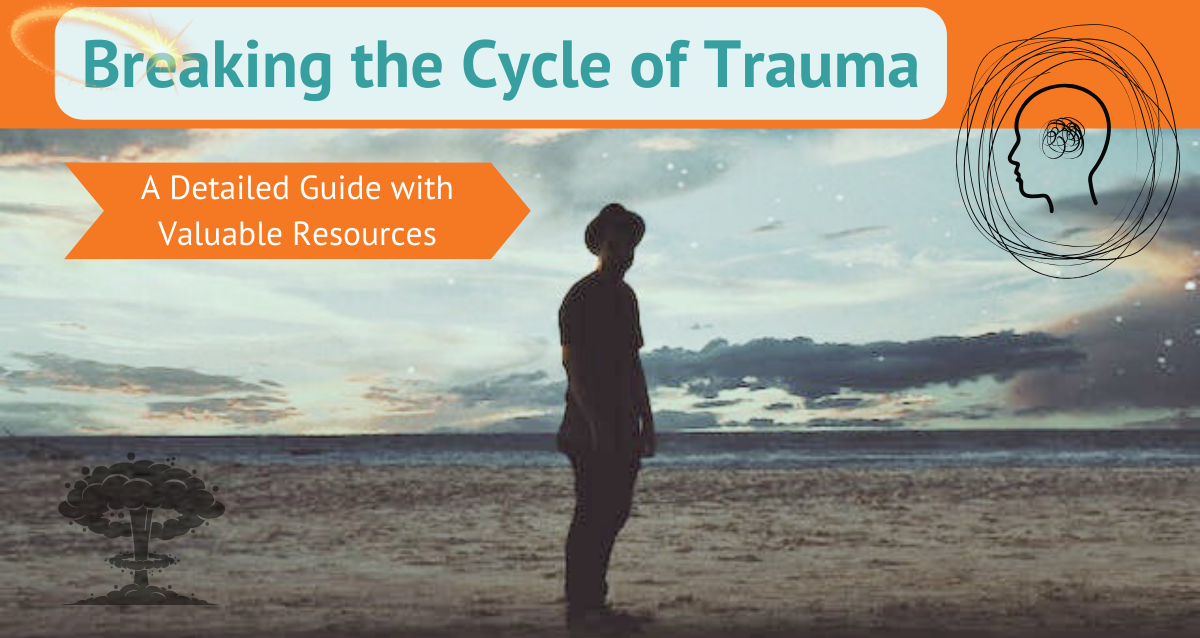




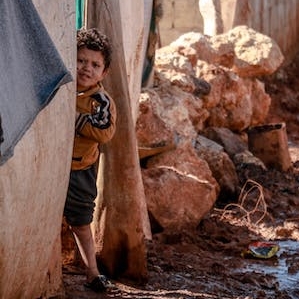

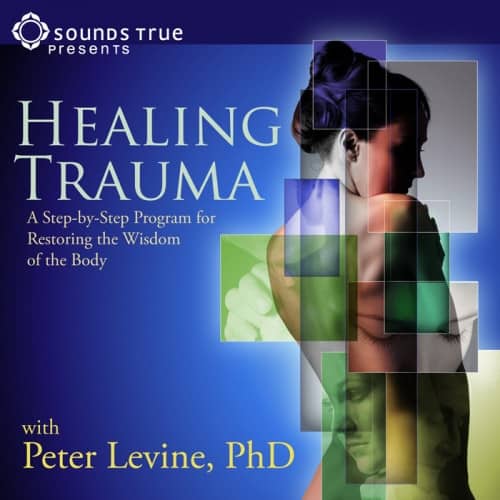
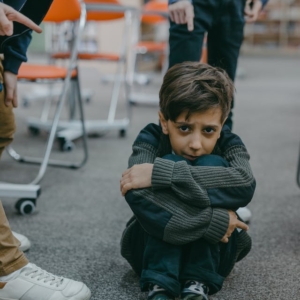





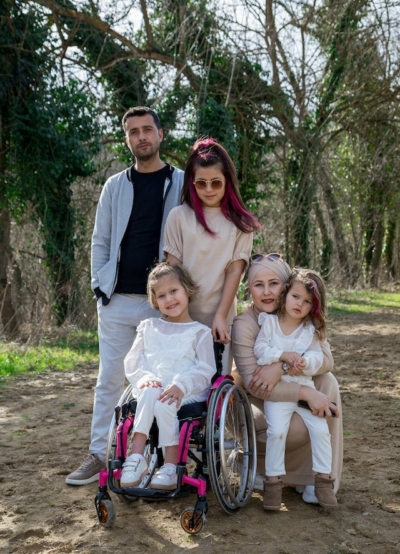




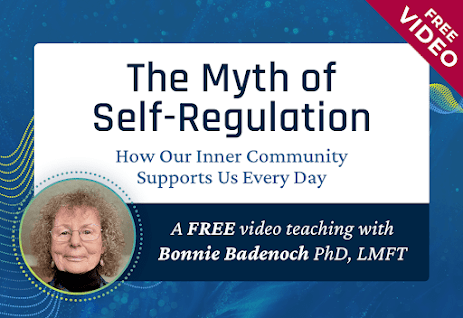

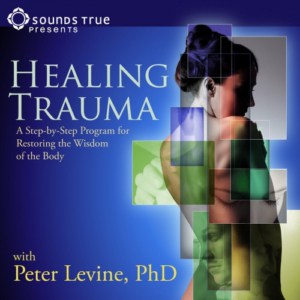


Leave a Reply